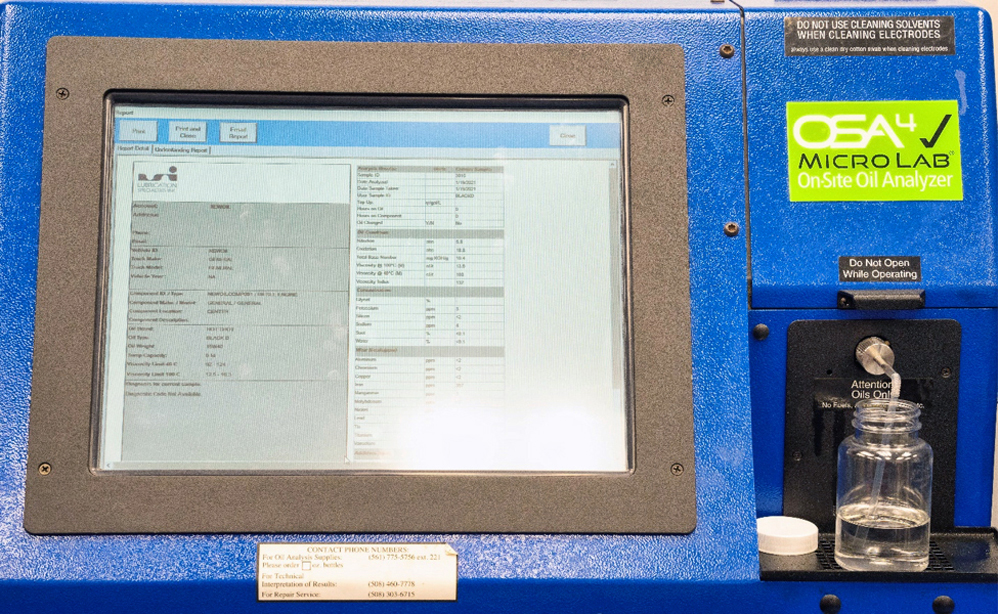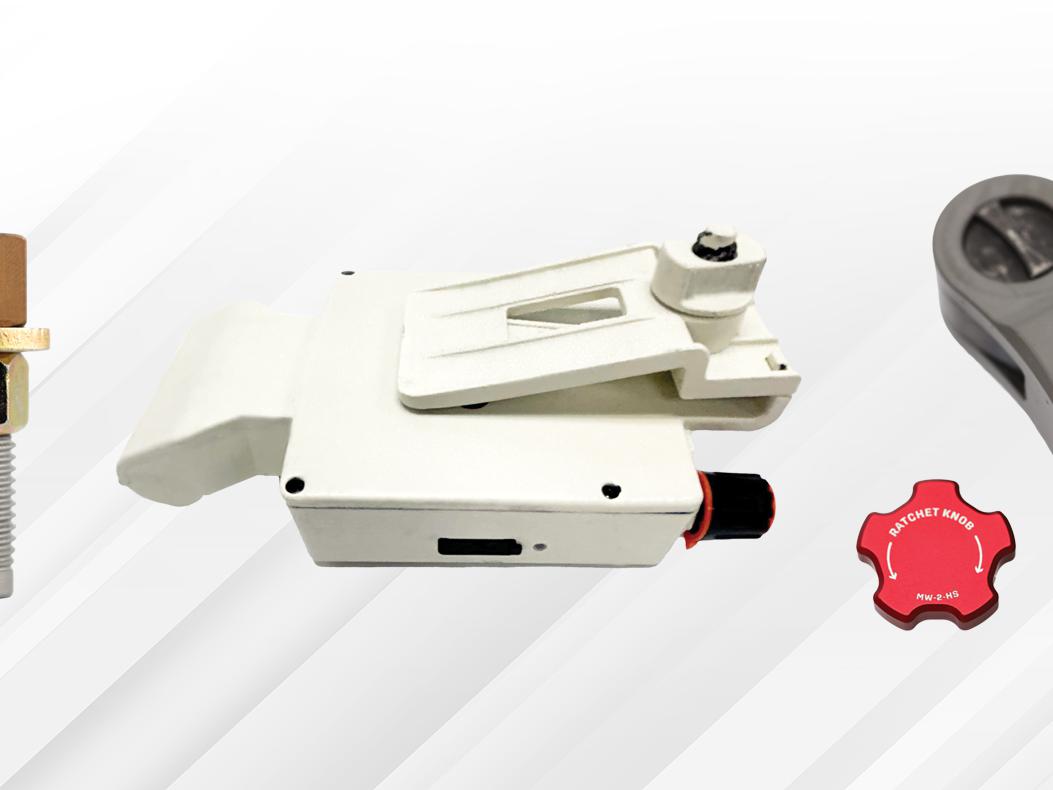PRI Education: How To Stay On Track With An Oil Analysis

It’s important to collect a clean oil sample in order to accurately perform an oil analysis. A source at Hot Shot’s Secret recommends first making sure the oil is warm, then letting the initial oil drain while avoiding any sediment from the oil pan.
Keep that race engine pumping at full power by incorporating this process into your regular maintenance schedule.
An oil analysis is similar to visiting your doctor for an annual blood test. The doctor can determine your overall health from a very small sample of your blood. It shouldn’t come as a surprise that the same can be done with lubricants in engines, gearboxes, transmissions, and more. An oil analysis can help determine if you are using the correct lubricant to protect your investment, and also helps monitor wear rates, viscosity, and lubricant breakdown, which can help ensure you stay on track on race weekend.
It is important to note unless you are part of an IndyCar or NASCAR series, the average racer will not have access to the equipment and technical professionals to have an oil analysis done at the track. Still, valuable data can be mined from samples sent out for analysis. The focus of this article will be on engine oil, though the same methodology could also be applied to other parts of a race vehicle.
The most important information an oil analysis can provide is in the overall comments made by the oil analysis technician. The technician will take past results and the existing results and formulate a course of action and recommendations. When sending off your sample, provide as much information as you can, including equipment type, mileage or hours used, and if any oil has been added to the base oil since the last sample. You also want to collect the sample the same way each time for repetitive results. It is recommended to use a pump method and clean tube or allow some oil to drain before retrieving the specimen.
Most motorsports involve extreme conditions that challenge the ability of lubricants to perform for long periods of time without failure. As a result, racers change their fluids often—sometimes more than needed. But with an analysis, racers can actually decrease maintenance costs by determining the proper drain interval. Plus, they can monitor and replace failing parts before a more complex and expensive repair is required.
Results from an oil analysis are broken into three parts: elemental analysis, contamination analysis, and oil condition analysis. Lubricants need to stay in balance to perform at their maximum efficiency, so if any one part is too far out of specification, the lubricant has failed.
Elemental Analysis
The elemental analysis detects the amount and type of elements in the oil from component wear, contamination, and typical ingredients found in oil. When an oil-lubricated component begins to wear, small amounts of metal become suspended in the oil. These trace amounts of metal, if left unattended, can lead to part failure.
Since components in a race car are made of several different metals, an oil analysis technician can usually determine which component is showing signs of wear by analyzing the type of metal and the concentration found in the test sample. For example, if the technician finds iron, the source would likely be the engine block, cylinder liners, or piston rings, depending on the engine construction.
A wear metal analysis is performed by emission spectroscopy, which provides the concentration of metals for wear, additive concentration, and contamination. Often, components have different levels of acceptable concentrations of wear metals. For example, a transmission or gearbox can withstand higher levels of wear metals compared to an engine, so be sure to find a trained oil analysis technician who can determine critical levels and provide the appropriate recommendations. Keep in mind, all systems are different. Some systems by their design will produce high levels of wear metals. It is essential that periodic test results are compared in order to establish if any trends are emerging.
The following is a “rule-of-thumb” for metal concentration limits in parts per million (ppm) for an engine:
|
|
Diesel Engine |
Gasoline Engine |
|
Iron |
80 |
300 |
|
Chromium |
25 |
40 |
|
Lead |
50 |
n/a |
|
Copper |
50 |
75 |
|
Tin |
25 |
40 |
|
Aluminum |
30 |
40 |
|
Nickel |
10 |
15 |
|
Silver |
5 |
5 |
|
Silicon |
5 |
20 |
Contamination Analysis
Contamination analysis detects the physical presence of unwanted fluids or contaminants including water, fuel, and antifreeze; particles such as dirt and metal; and oil byproducts such as soot, nitration, and sulfur. These contaminants can be internal or external. Many oils use various additives to obtain certain levels of performance, however, so provide a reference sample to your oil technician to determine the expected life available for the lubricant.
When lubricants oxidize, they form reactive materials that can re-constitute into different deposits. Oil analysis can help to identify the degree of oxidation that has occurred. More sophisticated analysis may have to be performed to identify the exact contaminant. Oxidation, sulfur, soot, fuel, antifreeze, and nitration are measured by an instrument called a Fourier Transform Infrared Spectrometer (FTIR). Values are compared to a baseline reference of the oil.
Oil Condition Analysis
Finally, an oil condition analysis tests viscosity and the oil’s ability to neutralize acids (Total Base Number for engines or Total Acid Number for non-engines). Oil viscosity breaks down due to the extreme heat and pressure during the combustion process. Once the oil is broken, excessive wear and part failure is shortly behind. When this happens, changing the fluid sooner or finding a better lubricant should be considered.

As an oil begins to break down, various types of acids form, which can lead to further oil degradation, metal wear, and additive depletion. The Total Base Number (TBN) measures the amount of basic (alkaline) materials in engine oil that will neutralize acids. The TBN decreases as oil approaches the end of its useful life, so the lower the value, the less effective the oil will be at neutralizing acids.
Work with your lubricant supplier to review your current program and determine what can be improved. If everything is running smoothly, use the opportunity to dial in your drain intervals to keep maintenance costs in check. Using the proper lubricants and changing at the correct intervals will not only save you money, it can also maximize the performance of your vehicle and help lead to more victories.
Hot Shot’s Secret Digital Marketing Manager Josh Steinmetz is a true gearhead and motorsports enthusiast. He grew up on a farm before earning a degree in Agricultural Engineering from Ohio State University. He is responsible for managing the company’s ecommerce sales and digital strategy. He also assists with the National Tractor Pullers Association involvement and the Steve Sommers Overnight Drive radio show.
 MEMBERSHIP LOGIN
MEMBERSHIP LOGIN JOIN PRI
JOIN PRI


